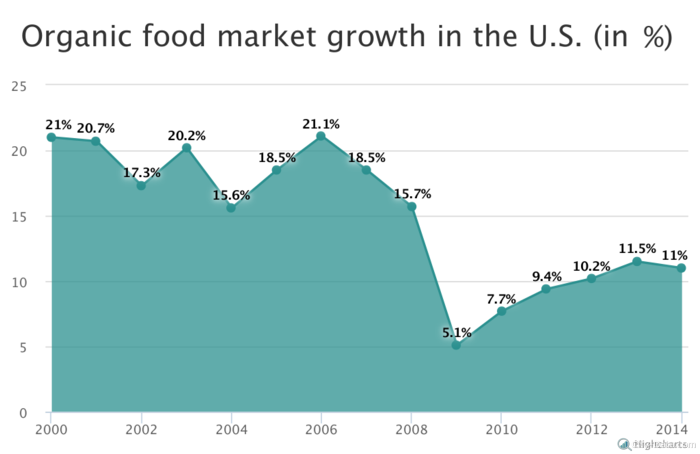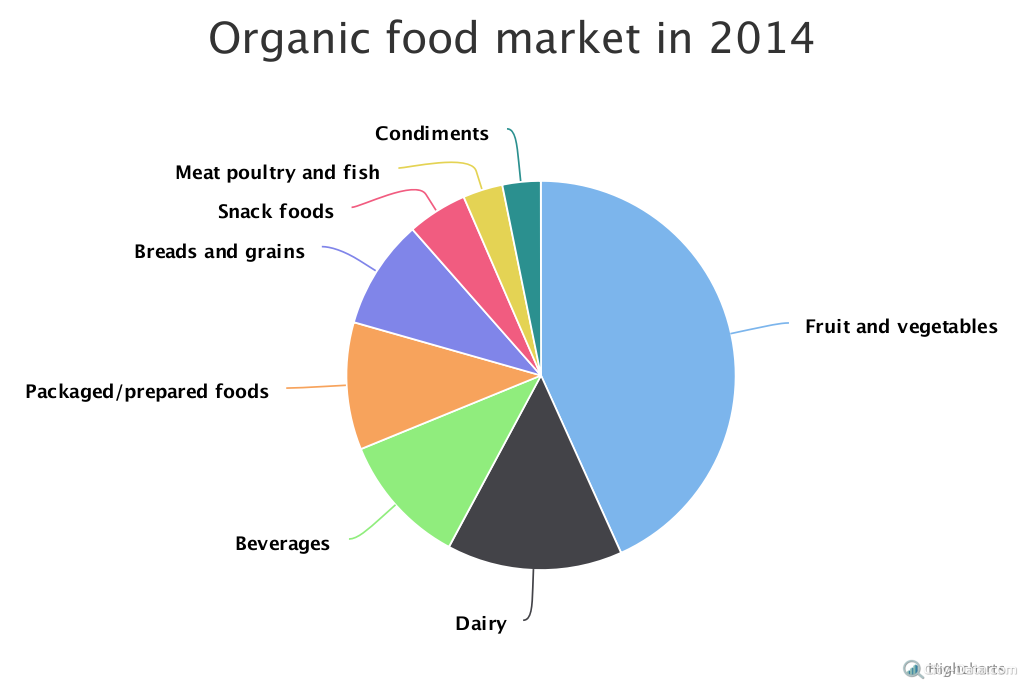Pavel Prikhodko, Ph.D. Machine Learning
In 2014, the United States led the world in organic food revenue, generating over €27 billion according to Statista.com. Germany had the second-largest market, with organic food sales amounting to approximately €7.9 billion. Third-place France produced around €4.8 billion.
In 2014, the annual sales growth of organic food in the U.S. decreased slightly from 2013 levels — 11 percent in 2014 versus 11.5 percent in 2013. Organic food sales growth in 2012 and 2011 approximated to 10.2 percent and 9.4 percent respectively. In 2009 and 2010, the annual sales growth of organic food amounted to only 5.1 and 7.7 percent.

The leading organic food category in 2014 was fruits and vegetables, which encompassed approximately 43.3 percent of all sales (compared to 42.2 percent in 2011). Dairy claimed a share of 14.6 percent in 2014, while beverages made up 11 percent of the total number. In comparison, dairy and beverages amounted to 15.7 percent and 11.4 percent respectively in 2011. The share of packaged/prepared foods was also quite large in 2014: 10.6 percent (in 2011 it was nearly the same — 10.8 percent). In 2014, breads and grains comprised 9.1 percent, compared to 9.6 percent in 2011.
Snack foods made up about 5 percent of the total number in 2014. Meat, poultry and fish made up 3.3 percent, compared to 2.8 percent in 2011. The condiments category had the lowest sales rate, making up only 3.2 percent in 2014.

Now let’s analyze the importance of the “organic” label in food and beverage purchasing decisions among different generations of American consumers. A 2014 survey by Harris Interactive suggested that 55 percent of millennials considered the label organic as either a very or somehow important driver for their grocery purchasing decision. About 50 percent Gen Xers stated that an “organic” label on food was very important to them. The shares of baby boomers and Matures who felt this way about the “organic” label were 38 percent and 35 percent accordingly.

About Pavel Prikhodko
Pavel Prikhodko, Ph.D. Machine Learning
Pavel has worked for many years as a researcher and developer on a wide range of applications (varying from mechanics and manufacturing to social data, finance and advertising), building predictive systems and trying to find stories that data can tell.
In his free time, he enjoys being with his family.
Other posts by Pavel Prikhodko:
